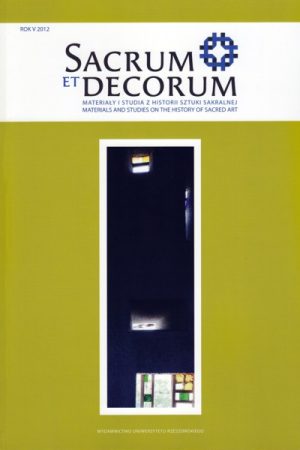Reconstruction and restoration of the architecture and furnishings of the Monastery of Discalced Carmelites in Poznań in the years 1945–1990
Keywords:
Aleksander Holas, Franciszek Morawski, Józef Dutkiewicz, Poznań, Poland, convent of Discalced Carmelites, architecture, furnishings, restorationAbstract
The convent and church of the Discalced Carmelites in Poznań is the first and oldest temple in Poland which was dedicated to St Joseph (1618). The church erected in the Baroque style was designed by architects Jerzy Catenaci and Krzysztof Bonadura. The latter prepared the construction plans of the convent building taking into consideration the detailed building regulations of the Order, and they also supervised the construction of the temple. On the basis of the decision of the Prussian king Fredrick Wilhelm of 5 July 1801, the convent went into liquidation and its buildings were handed over to the jurisdiction of the Prussian army. Since 1831, the church fulfilled the function of an Evangelical garrison temple (new furnishings and interior decoration of the interior after the renovation). In the year 1919 the church became a garrison temple of the Polish army. The Carmelites recovered their property in 1945 in a state of complete ruin. The reconstruction and restoration of the monument (which also comprised its interior decoration) lasted many years. It was conducted under the supervision of city conservator in accordance with the plans approved by architect Aleksander Holas (church façade), architect Franciszek Morawski (convent) and architect engineer Józef Dutkiewicz from Cracow (church and refectory interior). The reconstruction and restoration tasks have been discussed in detail in the above article.Downloads
Downloads
Published
How to Cite
Issue
Section
License
Copyright (c) 2012 Sacrum et Decorum

This work is licensed under a Creative Commons Attribution-NonCommercial-NoDerivatives 4.0 International License.
In line with the Open Access policy, authors retain full copyright to their articles – without restrictions.
Authors can deposit their articles in a repository of their choice.


